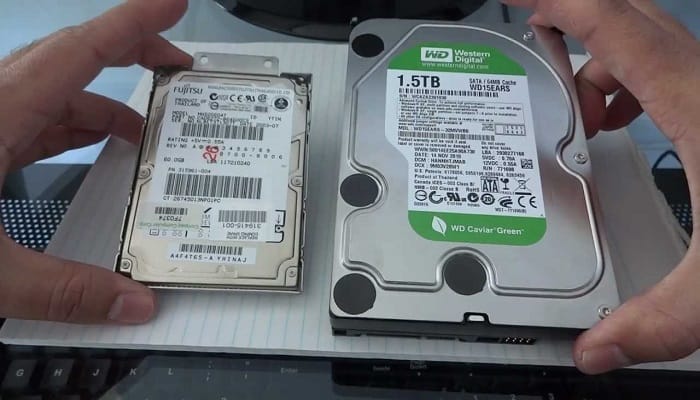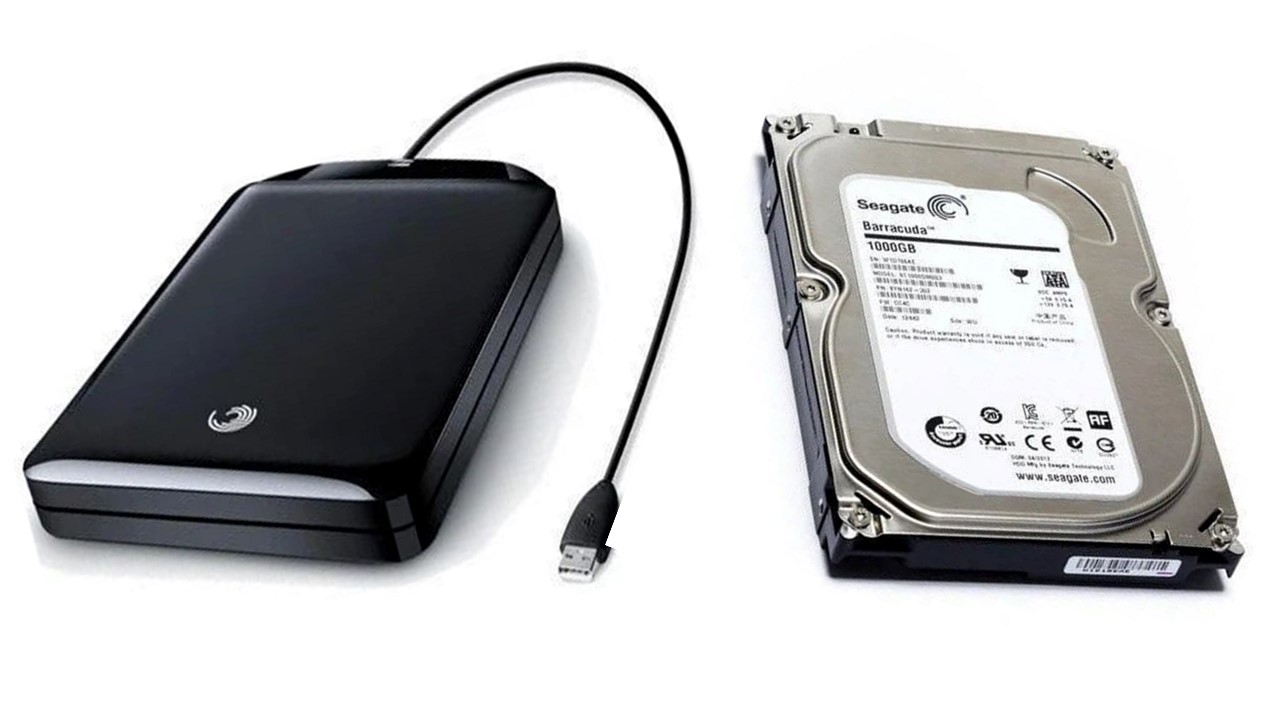There are two ways in which you can add data storage space for your desktop or laptop computer: either you can use a desktop drive or use a portable drive.
These disk drives are pretty much different from the primary hard disk drive that comes installed in your computer, though the purpose of all is the same.
Ideally, they may look similar and also in some other ways as well, but there are a few specific differences between the two.
In This Article
KEY TAKEAWAYS
- The portable drives are designed to be durable and sustain shocks which the desktop drives lack.
- The desktop drives are more convenient for use in static settings and offer higher processing speed in comparison to the portable drives.
- The portable drives do not make as much noise as the desktop drive while operating.
- The portable drives are convenient to use and are less costly than the desktop drives due to smaller storage space in comparison.
7 Differences Between Desktop Drive and Portable Drive

1. Durability
The desktop drives are obviously not designed for portability. Therefore, these drives are not resilient or durable as the portable drives.
This means that the desktop drives will not survive the shock of an accidental fall just as a portable drive generally would.
On the other hand, the portable drives are much smaller in size and the streamlined design of it makes it very easy to stash it in a purse or a backpack.
You can even add an extra layer of protection to the portable drive by using a protective case.
2. Preferences
A desktop drive is more preferred in a static office setting. Here, the speed of processing is much more significant than durability and convenient size.
On the other hand, if you are constantly on the go you will be better off using a lighter and more resilient portable drive, even though it lacks in processing speed and in disk space, instead of a desktop drive.
3. Noise
All hard disk drives store data on spinning discs called platters that can be double-sided as well.
There are also other moving parts in it such as the read and write heads and the actuator. All these make a very loud noise in a desktop drive while performing.
A portable drive, though will have the same components inside, will make much less noise than a desktop drive simply because it spins at a much slower rate.
4. Functions
The primary function of the desktop drive is to store data in it which you can use later on, as and when required.
It simply adds more GB to the data storage of the computer rather than transporting them. Moreover, it can be even used as a primary disk drive.
The design of the portable drive, on the contrary, is primarily intended for data carriage. It can load data or files from one system and transfer the same to another computer in another location.
Ideally, these devices resemble thumb drive more closely in terms of function and utility.
5. Casing
The larger desktop drives typically come in a metallic case to cover the whole unit, which makes them heavier. There are small openings in this shell to allow connecting the cable and power cord.
The smaller portable drives do not come in such a metallic shell. Of course, you can use an additional case for added protection but that will not make it as heavy as the desktop drives.
6. Price
The desktop drives are costlier because it comes with high-performing features such as larger storage space and high processing speed.
The portable drives, on the other hand, is less costly because it has much smaller data storing capacity and performs at a slower speed.
7. Convenience
It is more convenient to use a portable drive because you will not need a wall socket for power supply. You can carry it in your backpack or purse, and not need to carry an AC adaptor with you all the time.
When you use a desktop drive for your data storage needs, you will be deprived from these conveniences.
Which is Better – Desktop Drive or Portable Drive?

Actually, these differences in the enclosure, feature and performance of the two data storage drives does not imply that one is better than the other.
Since both these drives have moving parts inside them, there is no guarantee that one or both of these will not fail.
However, the MTBF or Mean Time Before Failure may be different. This is due to the quality of the drives and its intended use but not because one is portable and the other is non-portable.
This means that the size of the drive or the spinning speed of the disks will not be a significant cause for the failure of any of these drives.
Nevertheless, if you want to know which is the best option between the two and want to choose the right storage device, you will need to look much deeper than the structural design and features of the two storage devices.
First, you will need to find the right answers to some specific questions. These are:
- What is your personal preference?
- Which do you prefer, a desktop or a laptop computer or any other portable device?
- How do you intend to use it?
- How much storage capacity do you need?
- Are you in favor of speed or durability?
Most importantly, you should know the fundamental difference between the two types of storage device based on a few specific factors as mentioned above.
Both portable and desktop disk drives use a USB port and cable to connect to the computer for exchanging files.
This means that, irrespective of what type of extra storage device you use, you do not have to go into the computer case and fiddle with the internal components of the system.
These additional data storage devices are growing in popularity for its usability in the interactive setting of the Internet.
The desktop or non-portable disk drives, as these are commonly called, are mostly used by people who spend a lot of time working on a desktop computer.
These storage drives are designed after the primary hard disk drives inside the desktop cabinet. The features of most common desktop drives are:
- It contains a 3.5-inch disk and
- It spins at 7200 RPM.
This means that these drives are faster, but these are also heavier. However, the storage capacity of these drives is much more than the portable counterparts.
There is one significant drawback of the desktop drives. It needs much more power to operate in comparison to the portable variants.
It is for this reason the desktop disk drives come with their own power cords that you need to plug directly into the electric outlet on the wall for a steady power supply.
There are a few latest versions of desktop drives that come with the most sophisticated features.
These features will allow you to configure it so that it mirrors the primary disk drive of the computer and create a backup of your files and jobs automatically as you continue with your work.
This eliminates even the slightest of chances of losing any of your valuable data.
The portable drives, on the other hand, are intended to match the hard drives typically found in the laptop computers. The features of the portable drive are:
- It comes with a 2.5-inch disk size and
- It spins at 5400 RPM.
These drives are, therefore, lighter and comparatively slower than the external or desktop drives. It also has a much smaller storage capacity.
The good thing is that these drives need far less power to operate, so much so that it can draw the necessary power to operate right from the laptop computer directly through the USB port.
This means that you will not need to search for a nearby wall outlet for power supply to use the portable disk drives.
Conclusion
To conclude, it can be said that the difference between the desktop and portable drives is simply in its structure, price and features.
The function of both is all the same, which is to provide additional storage space.
Therefore, your choice will and should entirely depend on your preference and usage.